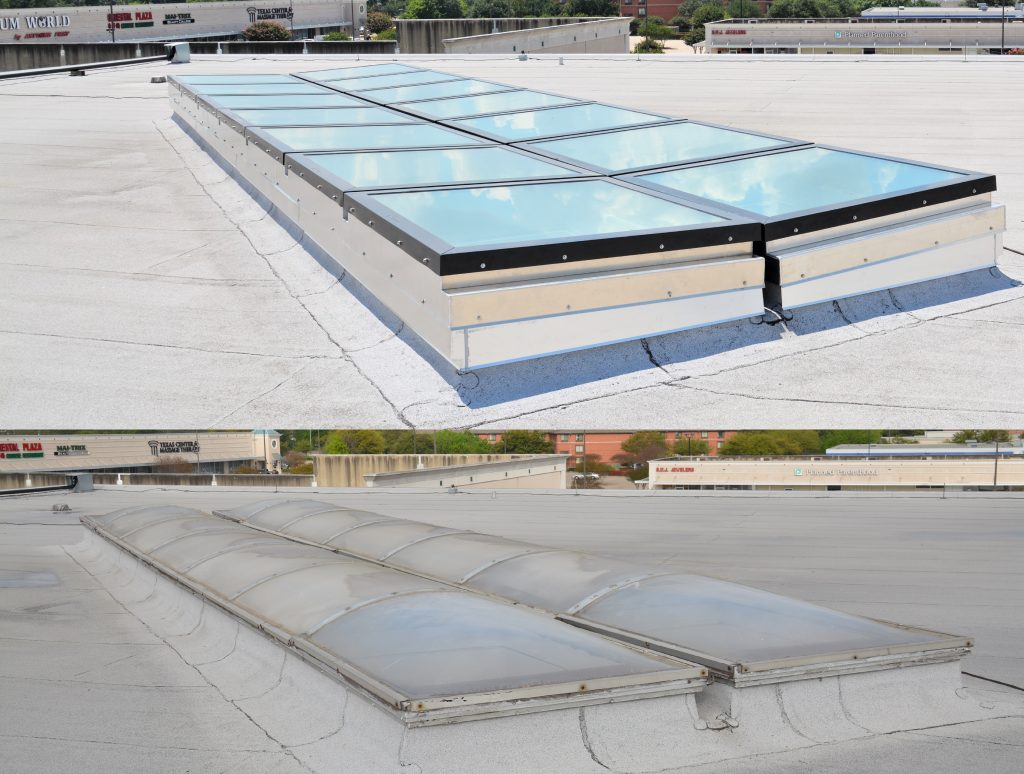
Skylights can brighten a room, add to the warmth of a home, and serve as a decorative flourish to complement the interior style of a house. They can also serve functional and aesthetic purposes for commercial facilities. Of course, if you are thinking of purchasing a skylight, you want to make sure that you select the right type for your specific needs and preferences.
Two common types of skylights are glass and acrylic. The following information will discuss some of the differences between these two products, and which one may be better for your home or business.
Cost
Prefabricated and mass-produced glass models are often less expensive than acrylic skylights. However, customized glass skylights tend to be more costly than their acrylic counterparts, especially if they are solar or electric venting models. Venting models (models that open) can be anywhere from 4 to 7 times more expensive than their fixed counterparts.
Design
Acrylic skylights generally utilize older design technology from roughly the 1980’s. Some high quality acrylic models contain a thermal break within their aluminum frames. This thermal break serves as a partition between the interior and exterior of the product.
In most respects, however, glass skylights are much more effective thermal insulators than acrylic models. Most glass products come sealed with argon gas in between the glass panes, giving these skylights a significantly more efficient design for thermal insulation. Moreover, the design of glass skylights also enables them to serve as superior noise insulators compared to their acrylic counterparts; they can even reduce outside noise penetration by up to 50% more than other skylights.
View
As glass is a naturally transparent material, glass skylights offer a much cleaner and more comprehensive view of the outside scenery. In contrast, acrylic skylights tend to somewhat distort the view. They also tend to manifest a bronze tint on their surface.
Durability
Skylights made out of acrylic material regularly expand and contract from thermal expansion, which causes their frame gaskets to wear out over time. Acrylic also tends to become brittle with the passing of time, and take on a yellowish tint. Acrylic skylights can only hold so much weight; for example, heavy snows may cause an acrylic model to break. Moreover, acrylic can be easily broken by the hail from a powerful storm.
In contrast, glass skylights contain seals that come with 20-year manufacturer warranties. Glass does not suffer from thermal expansion and contraction like acrylic does. In addition, glass is significantly tougher than acrylic: glass skylights can hold more weight than other models and can survive most hailstorms.
Warranty
As mentioned above, the best glass skylights come with a 20-year warranty (sometimes transferable) that guarantees you’ll be covered in the rare event of an early failure or breakage. Some acrylic skylights don’t come with such a comprehensive warranty – if any at all.
Which One is Better?
As the above information clearly demonstrates, glass skylights are superior to acrylic skylights in a number of ways. They are:
- Designed to be stronger and more efficient
- Designed to offer a more clear and transparent view
- Built to withstand damaging storms and heavy snowfall
- Covered by robust warranties
And while the cost of purchase for a glass skylight may be higher than an acrylic model, the return on investment is certainly worth it in the end.
If you’d like to learn more about the benefits of purchasing a glass skylight for your home or business, then reach out to the experts at Vtech Skylights. We will help you find the perfect skylight to meet all of your requirements, and will always deliver world-class customer service. Contact our team of friendly professionals today to learn more.